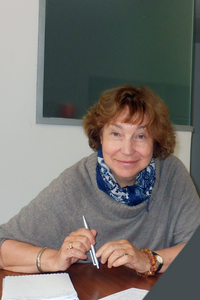The Painting of Fernando Botero: Universality and National Identity
https://doi.org/10.46272/2409-3416-2023-11-2-75-93
Abstract
The outstanding contemporary artist Fernando Botero Angulo (b. 1932) is one of the leading artists of the postmodern era, thanks to the paraphrasing and irony of his works. He is also known as a graphic artist and a sculptor. Botero’s graphic and pictorial works are kept in many museums around the world, including the Russian ones — the State Hermitage Museum in St. Petersburg and the Pushkin State Museum of Fine Arts in Moscow; his sculptures adorn the cities of Europe, America, Asia. This article focuses on the artist’s painting: it gives an idea of him as a master who reflected universality and at the same time national identity of his country through landscape, still life, bullfighting, dancing. Several parts of the article are devoted to: «Biography and “circular form”», «Secular and religious images», «Landscape, interior, still life», «Bullfighting, music, dancing». A significant place is given to the «circular form», since it made the artist a unique creator, who used it in many great works of art, and then created images recognizable by everyone who has ever seen Botero’s paintings. There are various genres of the master’s works, in which he acts not only as a creator of a unique form, but also as a brilliant colorist. Botero managed to raise Latin America to a high pedestal; starting from the pan-European tradition, he showed the universal through his native Colombia.
About the Author
N. A. Sheleshneva-SolodovnikovaRussian Federation
Nataliya A. Sheleshneva-Solodovnikova - Senior Researcher of the Institute for Latin America of the RAS.
115035 Moscow, Bolshaya Ordynka street, 21
References
1. Botero J.C. (2013) The Art of Fernando Botero, Ediciones El Viso, Madrid, Spain, 240 p. Chiappini R. (2016) Botero: Paintings 1959-2015, Skira, Milan, Italy, 256 p.
2. Girin Yu.N. (1993) K voprosu o latinoamerikanskoi modeli mira [On the Latin American world model], Latin America, no. 9, pp. 59-69. (In Russian)
3. Guénon R. (1991) Krizis sovremennogo mira [The Crisis of the Modern World], Arktogeya, Moscow, 160 p. (In Russian)
4. Hanstein M. (2017) Botero, Taschen, Cologne, Germany, 96 p.
5. Jung С.G. (1994) O sovremennykh mifakh [About modern myths], Praktika, Moscow, Russia, 252 p. (In Russian)
6. Karasevich A.I. (2016) Fernando Botero Angulo [Fernando Botero Angulo], Komsomol’skaya pravda, Moscow. 71 p. (In Russian)
7. Lukina A.V. (2004) Sotsio-kul’turnye tekhnologii formirovaniya natsional’noi identichnosti (istoriko-metodologicheskii aspekt) [Sociocultural Technologies of National Identity Formation (historical and methodological aspect)], Abstract of PhD. dissertation, Yekaterinburg, Russia, 25 p. (In Russian)
8. Ortega y Gasset J. (1991) Degumanizatsiya iskusstva [The Dehumanization of Art], Raduga, Moscow, 639 p. (In Russian)
9. Padilla Ch. (2020) Botero: The Search for a Style (1948-1963), Skira, Milan, Italy, 200 p.
10. Panofsky E. (1979) El significado en las artes visuales [Meaning in visual arts], Alianza Editorial, Madrid, España, 386 p. (In Spanish)
11. Serrano E. (1999) Noé León, El Sello Editorial, Bogotá, Colombia, 174 p. (In Spanish)
12. Sheleshneva-Solodovnikova N.A. (1997) Kontseptsiya «krugovoi formy» Fernando Botero – utverzhdenie latinoamerikanskoi mental’nosti [Fernando Botero’s concept of the «circular form» – a representation of the Latin American mentality], in Zemskov V.B. (ed.) Iberica Americans: Tip tvorcheskoi lichnosti v latinoamerikanskoi kul’ture [Iberica Americans: The Creative Personality Type in Latin American Culture], Nasledie, Moscow. 275 p. (In Russian)
13. Sheleshneva-Solodovnikova N.A. (2007) Latinoamerikanskoe iskusstvo XVI-XX vekov (istoricheskii ocherk) [Latin American Art XVI-XX centuries (historical essay)], URSS, Moscow, 390 p. (In Russian)
14. Sheleshneva-Solodovnikova N.A. (2008) Latinoamerikanskoe iskusstvo skvoz’ prizmu postmodernizma [Latin American art through the prism of postmodernism], ILA RAN, Moscow, Russia, 111 p. (In Russian)
15. Sheleshneva-Solodovnikova N.A. (2011) «Chudesnaya real’nost’» Noe Leona [«Miraculous Reality» of Noe Leon], Latin America, no. 7, pp. 76-95. (In Russian)
16. Zatonskij D. (1996) Postmodernizm: gipotezy vozniknoveniya [Postmodernism: Hypotheses of Origin], Inostrannaya literatura, no 2, pp. 273-283. (In Russian)
Review
For citations:
Sheleshneva-Solodovnikova N.A. The Painting of Fernando Botero: Universality and National Identity. Cuadernos Iberoamericanos. 2023;11(2):75-93. (In Russ.) https://doi.org/10.46272/2409-3416-2023-11-2-75-93

























